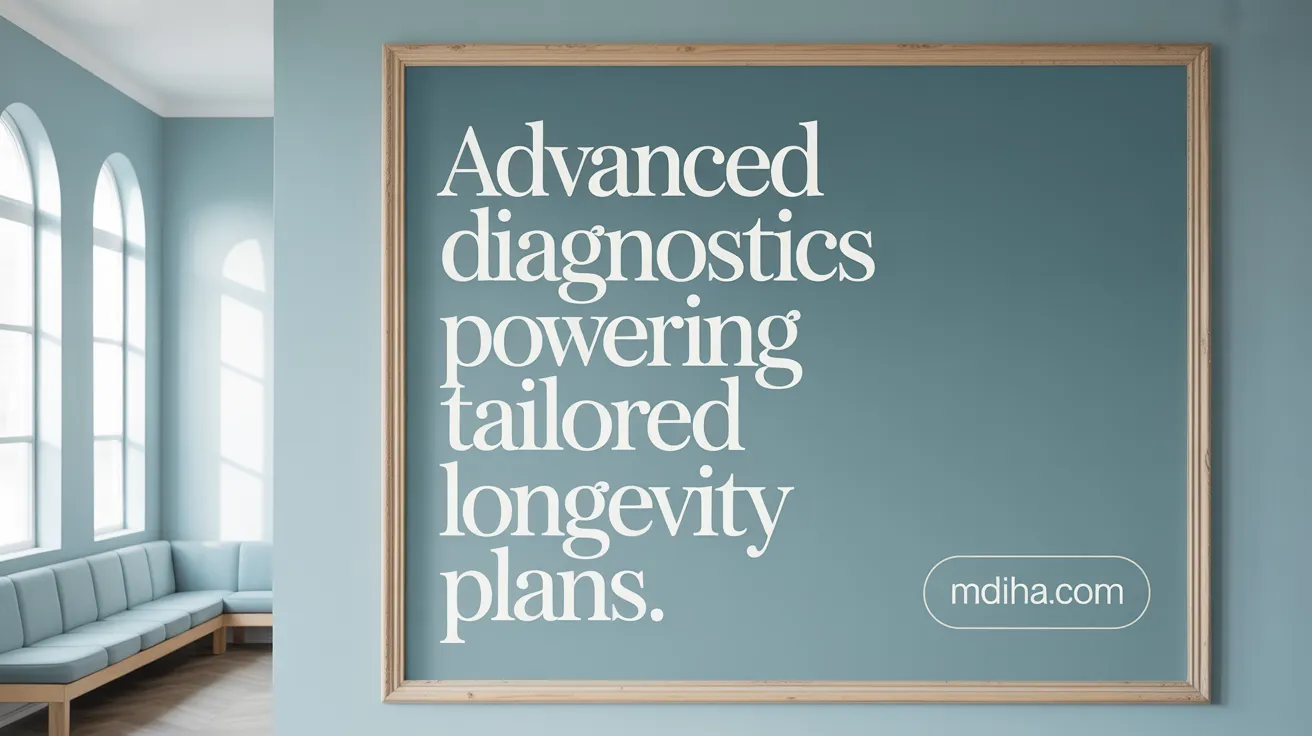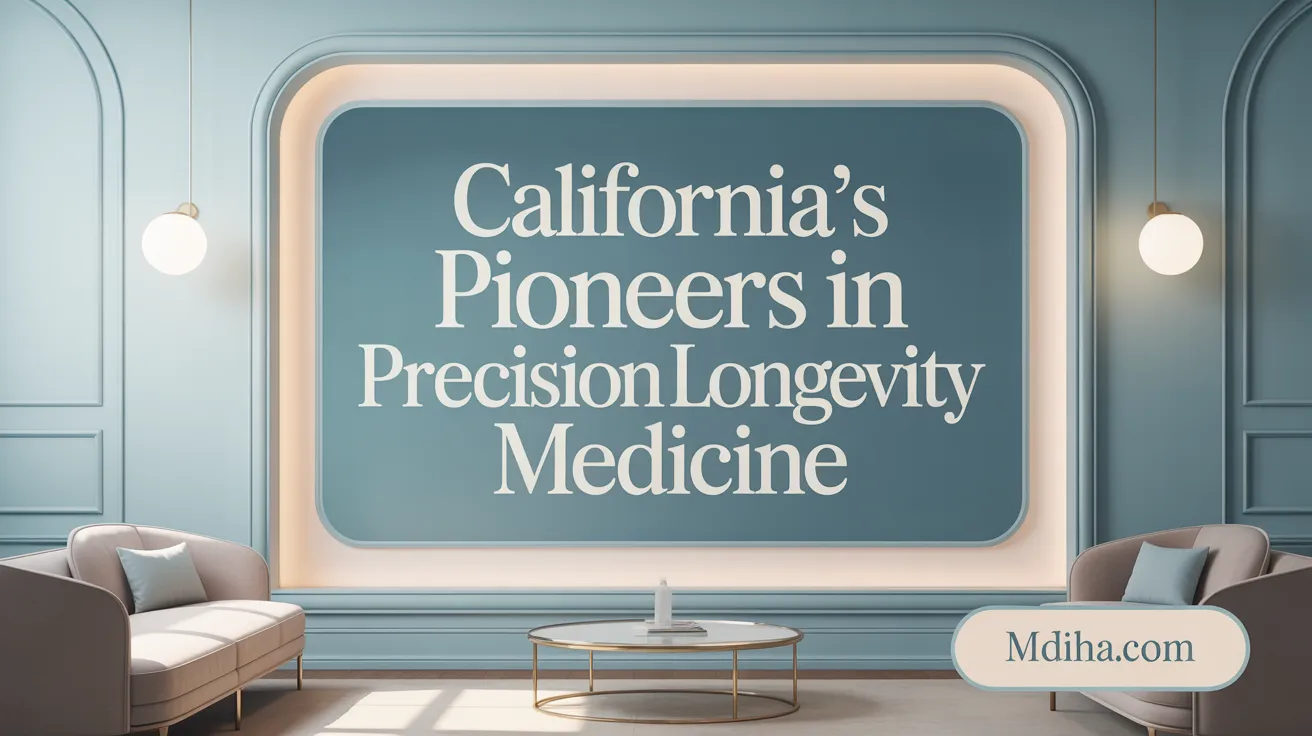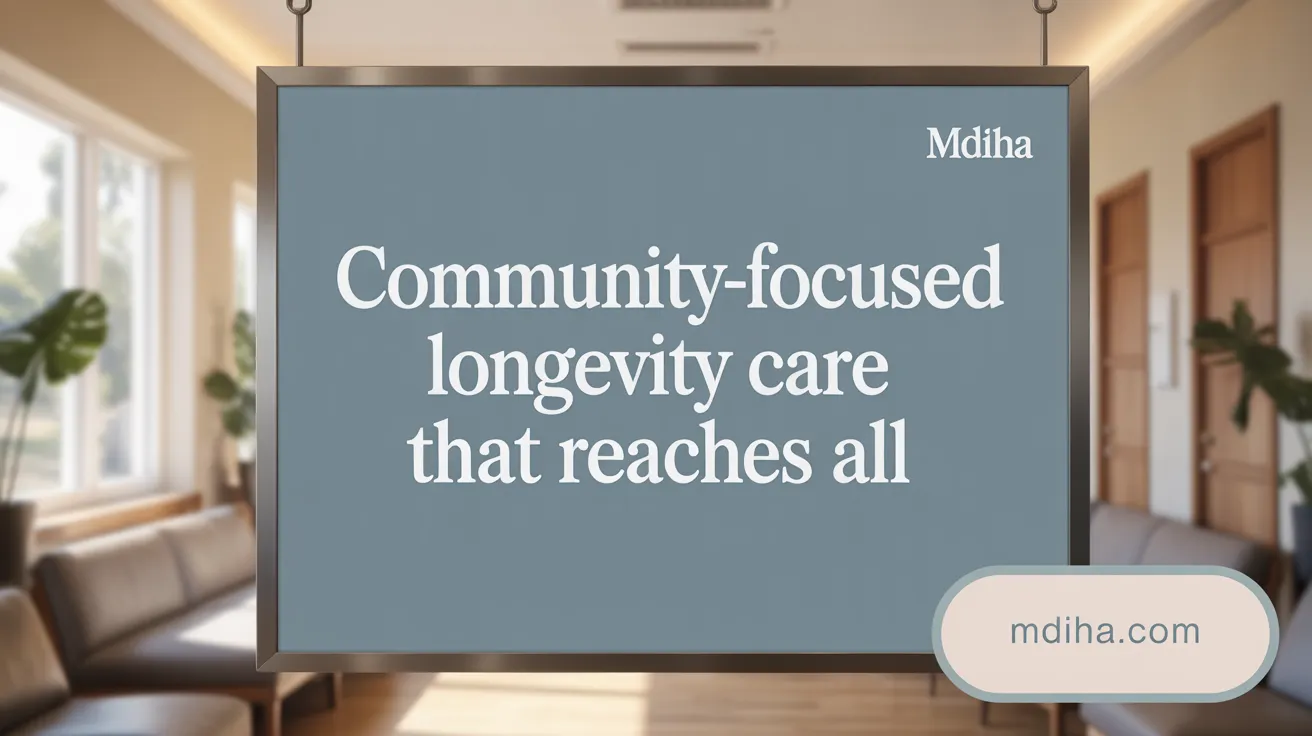A New Era in Longevity Care
California stands at the forefront of a transformative shift in healthcare—personalized longevity care. Combining innovative diagnostics, advanced therapies, and precision medicine, the state offers a unique approach that not only aims to extend lifespan but more importantly, enhances healthspan. This article explores what sets personalized longevity care in California apart, showcasing its scientific grounding, technological integration, and community-centric models that redefine aging and wellness.
The Science Behind Personalized Longevity Medicine in California

What core biological mechanisms do personalized longevity clinics in California target?
Personalized longevity clinics in California focus on addressing fundamental aging mechanisms that drive the onset of age-related diseases. These include mitochondrial dysfunction, which reduces cellular energy production; chronic inflammation, which contributes to tissue damage; cellular senescence, where aged cells lose function but persist and cause harm; telomere shortening, leading to cellular aging; and epigenetic changes that alter gene expression over time. By targeting these core biological processes, clinics aim to slow or reverse elements of aging and improve health outcomes.
How do clinics like the California Center for Functional Medicine approach longevity care?
The California Center for Functional Medicine integrates a functional medicine approach emphasizing early detection of silent age-related diseases such as type 2 diabetes prevention and Alzheimer’s disease early detection. They employ advanced diagnostic tools, including biomarkers and biological age clocks, to monitor patients’ biological aging precisely. Treatment plans are highly personalized, combining nutrition and lifestyle modifications, stress management techniques, hormone optimization, gut health improvement, detoxification, and therapies like peptide therapy and mitochondrial support therapy.
What key interventions are used in longevity clinics?
Longevity clinics in California deploy a variety of targeted interventions:
- Advanced Diagnostics: Blood biomarkers, full-body imaging, and wearable tech to track aging
- Personalized Nutrition and Lifestyle: Tailored diets and exercise plans optimized for individual metabolism
- Hormone Therapy: Bioidentical hormone replacement to restore balance
- Stress and Detoxification Programs: Techniques to reduce environmental toxin burden and inflammation
- Emerging Therapies: Peptide treatments and mitochondrial support to revitalize cells
These interventions combined make longevity medicine in California a science-driven, proactive, and individualized approach to extending healthspan and quality of life.
Innovative Diagnostic and Monitoring Technologies Driving Personalization

What diagnostic and monitoring tools are unique to California’s personalized longevity care?
California's personalized longevity clinics utilize advanced technologies that are reshaping how aging is measured and managed. Biological age clocks and advanced biomarkers provide deep insights into the aging process at a cellular and molecular level, allowing for a more accurate assessment than chronological age alone. Wearable devices are integrated into care protocols to continuously collect data on vital signs, physical activity, and other health metrics in real time. Moreover, continuous glucose monitoring plays a vital role in assessing metabolic health by tracking glucose levels, enhancing insulin sensitivity, and improving metabolic flexibility—factors crucial to aging well.
How do these technologies enhance personalized care?
These high-tech diagnostic and monitoring tools empower healthcare providers with precise and timely data on their patients' biological status. Continuous monitoring through wearables and biomarkers enables clinicians to tailor interventions proactively and dynamically, customizing nutrition plans, therapies, and lifestyle adjustments to each individual’s needs. This approach facilitates real-time feedback, enhancing the ability to prevent or slow age-related decline effectively, thereby extending healthspan and improving overall vitality.
Leading Clinics and Experts Advocating Holistic, Precision-based Approaches

Who are some prominent practitioners and clinics in California's personalized longevity care?
California is home to several notable longevity clinics pioneering personalized care. Dr. Rachel Meek leads the California Longevity & Vitality Medical Institute in San Francisco, specializing in hormone therapy and genomic evaluations to address aging-related health concerns specific to California populations. MEDHERO™ Longevity operates clinics in San Clemente and La Costa, focusing on personalized hormone replacement, weight loss injections, and body composition assessments using advanced tools like DEXA scans. Blue Coast Longevity in Newport Beach, founded by Dr. Meena Verma, offers peptide therapeutics and advanced diagnostics accessible via secure telehealth services across the state.
What treatment modalities are emphasized by these providers?
These clinics prioritize holistic and precision-based medicine grounded in advanced diagnostics and individualized treatment. Their approaches include bio-identical hormone therapies such as pellet implantation, peptide therapy to target cellular aging mechanisms, and personalized nutrition plans crafted from genomic and biomarker insights. Regenerative care strategies aim to improve metabolic and mitochondrial function, addressing root causes of age-related decline. Integrating real-time health monitoring and personalized genomic evaluations enables providers to tailor therapies that optimize vitality, resilience, and overall healthspan for their patients. For more detailed strategies on longevity care based on functional medicine principles, see the California Center for Functional Medicine.
Community-Centric Models and Accessibility in California's Longevity Care

How do California clinics promote community involvement in longevity care?
California clinics such as MEDHERO™ Longevity emphasize deep local ownership and community integration. The clinic is owned and operated by local founders who live in the area, creating a strong bond with the community. This local presence encourages proactive and honest health assessments tailored to individual needs, ensuring services resonate closely with local populations. Such community rooting fosters trust and helps clinics respond more effectively to area-specific health concerns.
What strategies enhance accessibility for California residents?
Accessibility is heightened through telehealth services, enabling personalized longevity care across the entire state. For instance, Blue Coast Longevity offers secure telemedicine consultations, removing geographic barriers and expanding reach beyond physical clinic locations. Furthermore, comprehensive programs like the Longevity Health Plan provide a multi-layered support system including dedicated clinical points of contact and member advocates. These advocates help members maximize benefits and navigate healthcare resources, facilitating smooth coordination between multiple providers. On-site diagnostic facilities and coordinated preventive care visits further improve early detection and treatment access.
Care coordination and member advocacy in longevity plans
Longevity plans in California emphasize care coordination to optimize health outcomes. By collaborating closely with patients’ healthcare providers, plans ensure seamless management of appointments, referrals, and medication reviews. This holistic approach reduces risks of drug interactions and unnecessary hospitalizations. Member advocates play a crucial role, acting as personalized guides to help individuals understand and utilize their healthcare benefits fully. Together, these strategies support a patient-centered model of longevity medicine that is both accessible and community focused as highlighted by the Longevity Health Plan and personalized healthcare frameworks.
Technological Innovations and Emerging Trends Supporting Longevity Care

What innovative trends are shaping longevity care in California?
California is at the forefront of several innovative trends that are reshaping longevity care. One significant development is the rapid growth of longevity clinic franchises like Next Health, based in Los Angeles, which plans to expand to over 150 locations by 2027. These clinics offer advanced diagnostic services such as full-body MRI and chest CT scans, alongside cutting-edge therapies like Therapeutic Plasma Exchange to reset health. This rapid expansion speaks to increased consumer interest and investment in longevity medicine.
Additionally, digital caregiving solutions unique to California are gaining prominence. Innovative platforms like Memory Well personalize care through storytelling, while programs like Wider Circle engage older adults in community activities to tackle social isolation. These technological solutions respond to California's demographic trends, where an aging population and increasing care demands drive a need for improved care coordination and support.
How is personalized healthcare leveraging technology in this region?
Personalized healthcare in California extensively utilizes technology to enhance proactive and precise care. Wearable devices, including Fitbit, enable individuals to track their daily health metrics such as steps, sleep, and nutrition. When shared with healthcare providers (with consent), this data informs wellness reports and allows for targeted recommendations tailored to unique genetic and lifestyle factors.
Clinics across California combine this real-time data with advanced diagnostics and genomic evaluations to craft individualized health plans. This approach helps identify risks early and tailor interventions effectively. Furthermore, these practices align with national precision medicine initiatives, which aim to integrate genetic, environmental, and lifestyle information for optimized patient care, particularly in managing chronic diseases and preventive health strategies.
| Innovation Area | Examples | Impact |
|---|---|---|
| Longevity Clinic Growth | Next Health franchise | Wide access to advanced diagnostics and therapies |
| Digital Caregiving | Memory Well, Wider Circle | Enhanced personalized care and social engagement |
| Wearable Technology | Fitbit, wellness monitoring | Improved patient-provider collaboration |
| Precision Medicine | Genomic evaluations, NIH initiatives | Tailored treatment and prevention |
Proactive Prevention and Early Intervention: The Pillars of Longevity Care

Why is early intervention critical in California's longevity care approach?
Many chronic and age-related diseases such as type 2 diabetes prevention and Alzheimer’s disease early detection develop silently over years before any symptoms appear. This hidden progression means that waiting for symptoms to arise often delays crucial treatment, reducing its effectiveness. California's longevity care prioritizes early detection by gathering comprehensive health data including Genetic Profiles in Healthcare, lifestyle habits, and environmental exposures. This allows providers to identify risks before illness manifests and to apply functional medicine principles and preventive strategies that can delay or even prevent disease development.
How do tools like Annual Wellness Visits (AWVs) and Chronic Care Management (CCM) enhance personalized longevity care?
Annual Wellness Visits (AWVs) offer a structured opportunity to collect detailed health information through Customizable Health Questionnaires. This data helps clinicians craft individualized wellness plans targeting specific risk factors. Chronic Care Management (CCM) Programs support ongoing patient health by providing monthly communication and monitoring, enabling timely lifestyle recommendations and interventions. Together, AWVs and CCM programs increase patient engagement, improve care coordination, and foster proactive management — all essential for effective personalized longevity care in California.
How are personalized health plans leveraging genetic and lifestyle data?
Personalized health plans in longevity care use an integrative strategy combining genetics, health history, and Social Determinants of Health. Patients and providers collaborate to assess risks, implement customized nutrition, hormonal balance treatments, and lifestyle changes, and continuously monitor progress with advanced diagnostics and wearable technology such as Fitbit health monitoring. This personalization supports targeted prevention and early intervention, enhancing healthspan and quality of life for aging Californians.
These approaches define California’s longevity care model, making proactive prevention and early intervention fundamental to extending healthy years and minimizing chronic disease burden.
California’s Model: Crafting the Future of Longevity Care
California distinguishes itself by integrating scientific rigor, innovative technology, and a community-focused ethos to deliver personalized longevity care that is both accessible and highly effective. By targeting fundamental biological aging processes, leveraging advanced diagnostics, and embracing genomic and lifestyle data, California clinics craft individualized care plans that emphasize prevention and health optimization. The state's dynamic landscape of locally rooted clinics, expanding franchises, and digital caregiving innovations highlights a multifaceted approach to supporting an aging population. This holistic, precision-driven model not only extends lifespan but enhances quality of life, solidifying California's role as a national leader in redefining how we age and thrive.
